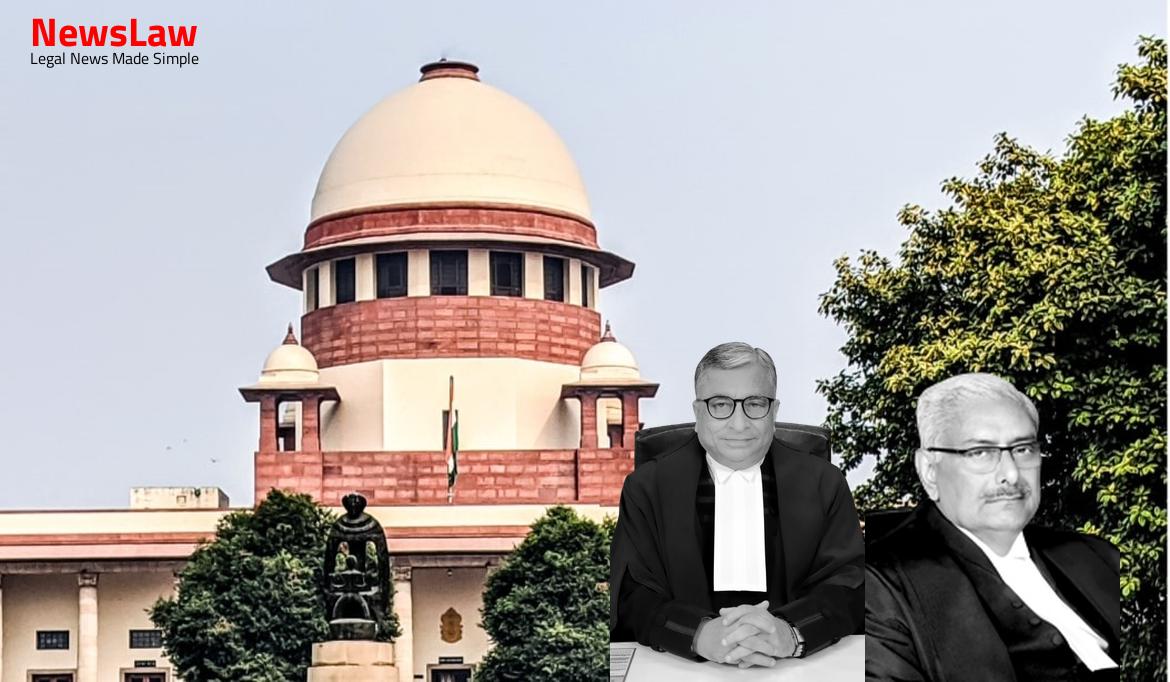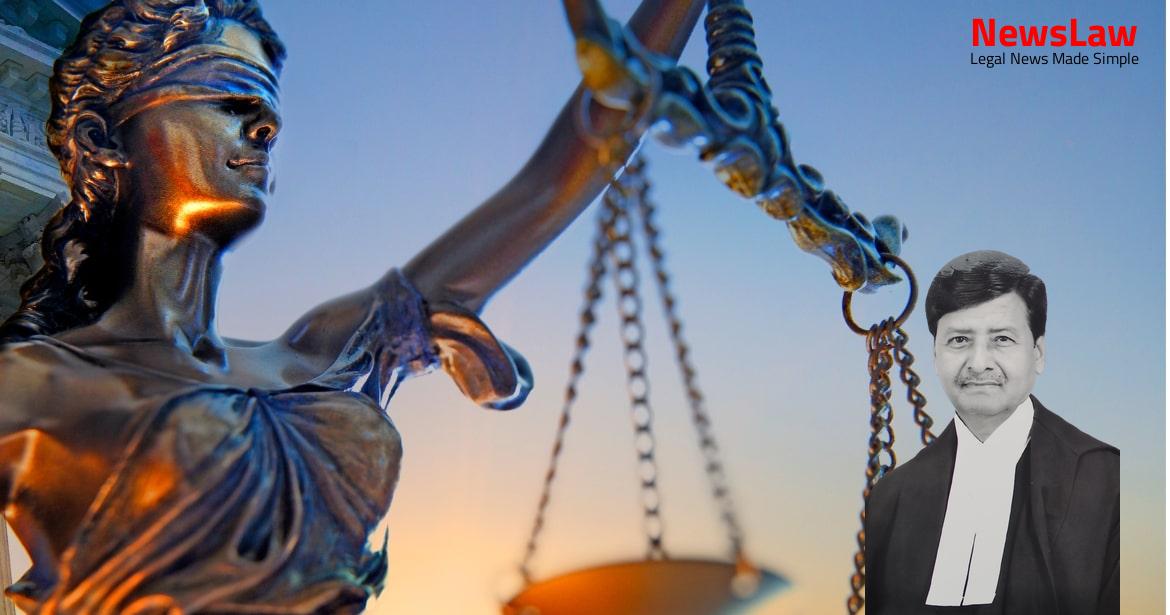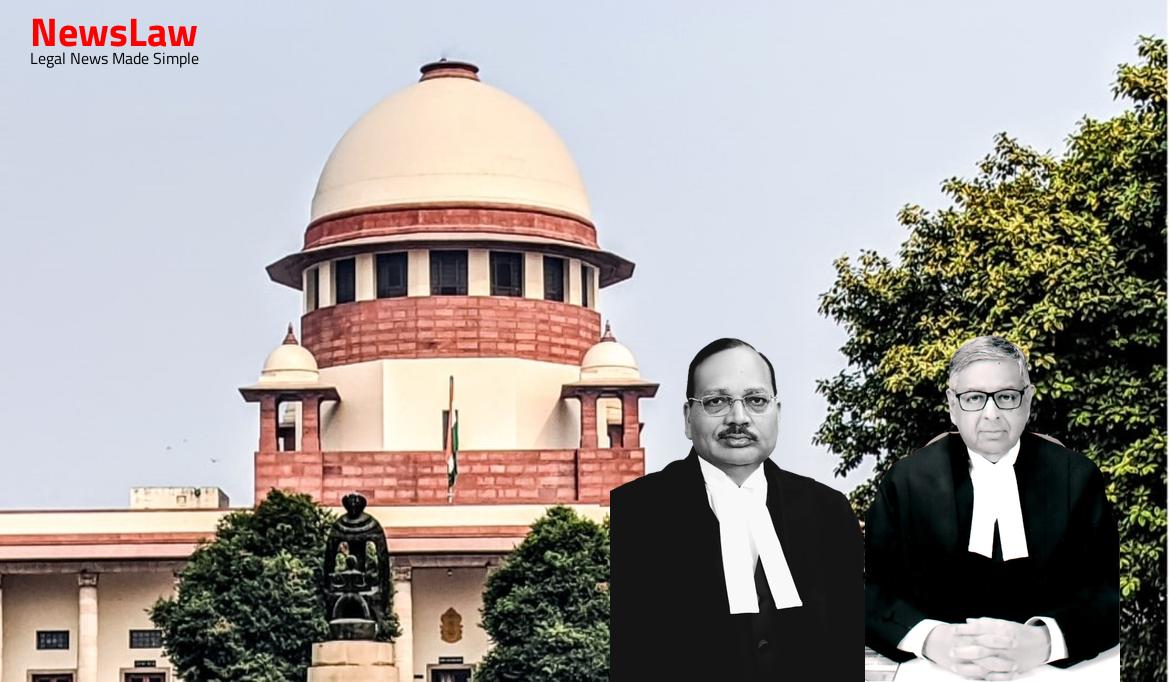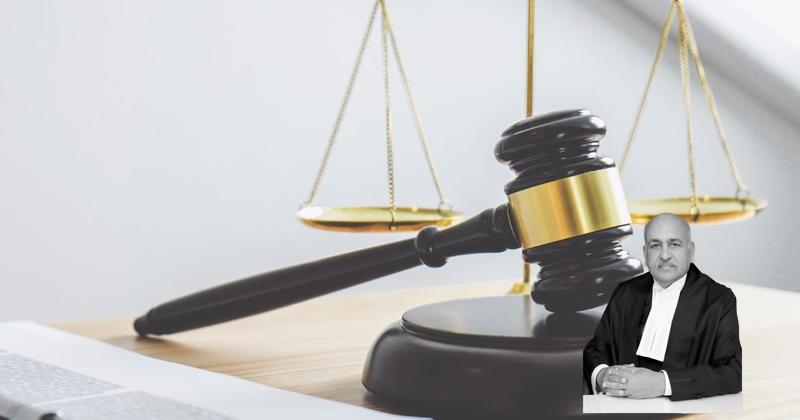Explore the complexities of contempt jurisdiction and the boundaries of freedom of expression in the legal world. The court’s analysis sheds light on the delicate balance between ensuring respect for judicial institutions and preserving the right to criticize constructively. Stay tuned to unravel the legal intricacies at play in this thought-provoking case.
Facts
- The petition was placed before the court on 22.7.2020.
- Initially, the court considered whether the petition should be listed for hearing as permission from the Attorney General for India had not been obtained by the petitioner.
- A petition was filed by Mahek Maheshwari regarding a tweet by Mr. Prashant Bhushan, Advocate, alleging contempt against the court and the judicial system.
- The Registry sought direction on listing the petition for hearing due to lack of consent from the Attorney General for India.
- After examination on the Administrative side, the court directed the matter to be listed on the Judicial side for appropriate orders.
Also Read: Preservation and Maintenance of Shri Mahakaleshwar Temple
Arguments
- Shri Dave, learned Senior Counsel, argues that freedom of expression, when exercised fairly, serves the public interest and should not be restricted by the Court.
- He refers to past cases like P.N. Duda vs. P. Shiv Shanker where strong allegations were made against the Supreme Court and emphasizes the importance of independent criticism even towards judges.
- Shri Dave questions the initiation of contempt proceedings without consent from the Attorney General and argues that the Court should show leniency towards criticism of judges if it does not interfere with the administration of justice.
- He highlights that the alleged contemnor No.2, Twitter Inc., is merely an intermediary and should not be held accountable for the tweets posted by the alleged contemnor No.1.
- Shri Dave suggests that the alleged contemnor No.1 has a history of addressing public interest issues related to democracy and judiciary, which should be considered before proceeding with contempt charges.
- He argues that criticizing judges should not be seen as a crime, as it is a necessary right in a democracy.
- Shri Dave distinguishes between criticizing judges as individuals and as part of the judiciary and suggests that the proceedings should not be based on an undefined fear of contempt action.
- He emphasizes the importance of fair criticism and highlights the need for considering the context and impact of statements before deeming them as contempt of court.
- Shri Dave concludes by stating that public discussion on institutional functioning, including the judiciary, is crucial for reform and should not be stifled by contempt charges.
- Alleged contemnors argued that notice should have been issued under the Contempt of Courts Act
- They claimed that any violation of the Contempt of Courts Act would invalidate the entire proceedings
Analysis
- The power of the Supreme Court to initiate contempt is not limited by the provisions of the Contempt of Courts Act, 1971.
- The Act provides a procedure for initiating contempt but does not abrogate or stultify the power of the Court under Article 129 of the Constitution.
- Parliament’s power of legislation on contempt should not undermine the status and dignity of the Supreme Court or High Courts.
- The Act is not a substantive provision conferring contempt jurisdiction; it is procedural, especially for suo moto contempts.
- Disciplinary control over the subordinate judiciary is crucial for judicial administration.
- The summary jurisdiction exercised by superior courts in punishing contempt of their authority exists to prevent interference with the course of justice and to maintain the authority of law.
- The purpose of contempt proceedings is not to protect judges personally but to uphold the authority of the court for the public’s benefit.
- Conduct that creates distrust in the popular mind and undermines confidence in the courts is considered contempt.
- Certain conduct, such as scandalizing the court or attacking judges, is classified as contempt because it undermines the dignity and authority of the judiciary.
- Public confidence in the judiciary is crucial for the proper administration of justice.
- The power to punish for contempt is limited and cannot be expanded to determine professional misconduct of advocates.
- The jurisdiction for professional misconduct of advocates is distinct from the contempt jurisdiction of the courts.
- Publication that attacks individual judges or the court as a whole with unwarranted and defamatory remarks is considered scandalizing the court.
- The impact of contemptuous behavior on the due administration of justice is a significant factor in determining contempt.
- The power to punish for contempt of itself is a constitutional power vested in the Court.
- This power cannot be abridged or taken away by legislative enactment.
- Reference to a number of decisions will be made to appreciate the rival contentions presented by both parties.
- The first judgment on the point is Sukhdev Singh Sodhi v. The Chief Justice and Judges of the Pepsu High Court.
- Rule 4 lays down the requirements of a petition regarding contempt proceedings.
- Rule 3 of The Rules to Regulate Proceedings for Contempt of the Supreme Court, 1975 outlines the ways in which contempt proceedings can be initiated.
- Section 15 of the Contempt of Courts Act specifies the actions that can be taken by the Supreme Court or High Courts in cases of criminal contempt.
- Section 17 outlines the procedure to be followed when action is taken based on a motion by the Advocate General/Attorney General/Solicitor General.
- Entry 77 of the Constitution deals with the Constitution, organization, jurisdiction, and powers of the Supreme Court, including contempt of court.
- Entry 14 of the Concurrent List pertains to contempt of court excluding contempt of the Supreme Court.
- The Contempt of Courts Act, 1971 was enacted by Parliament to regulate contempt proceedings.
- Rules 4, 5, and 6 of the Contempt of the Supreme Court provide guidelines for filing petitions, preliminary hearings, and serving notices to the person charged.
- These rules have been framed by the Supreme Court under Section 23 of the Contempt of Courts Act, 1971 with the approval of the President of India.
- The case of Pritam Pal v. High Court of Madhya Pradesh, Jabalpur Through Registrar highlighted important aspects regarding contempt of court proceedings and the application of the Contempt of Courts Act.
- The alleged contemnor’s actions are seen as enhancing the public’s confidence in the Court, rather than undermining it.
- The alleged contemnor believes that their actions have brought important shortcomings to the attention of the Court, highlighting the need for systemic corrections.
Decision
- Defendant is ordered to pay a fine of Rs.1,000/-
- In default of payment, defendant will suffer simple
Case Number: SMC(Crl) No.-000001 / 2020



